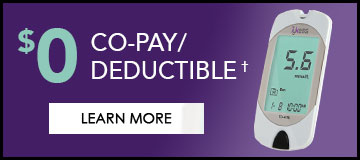
1. Introduction
Diabetes is a complex, multifaceted condition that requires careful management and a clear understanding of its types to ensure optimal health outcomes. Despite the significant advances in diabetes care and research, many people still find it challenging to distinguish between the symptoms of Type 1 and Type 2 diabetes. This confusion often leads to misdiagnosis or delayed treatment, ultimately impacting personalized diabetes management.
The purpose of this article is to clarify how diabetes symptoms differ between Type 1 and Type 2 diabetes. Understanding these differences can empower individuals and healthcare professionals to tailor their management strategies more effectively.
A Brief Overview of Diabetes Types
Type 1 diabetes is an autoimmune condition where the body’s immune system mistakenly attacks and destroys the insulin-producing beta cells in the pancreas. This leads to an absolute deficiency of insulin, a hormone crucial for regulating blood glucose levels. The onset is usually rapid, primarily affecting children and young adults, but it can occur at any age.
Type 2 diabetes, on the other hand, is characterized by insulin resistance and progressive pancreatic beta-cell dysfunction. While the body initially produces insulin, it becomes less effective at utilizing it due to insulin resistance. Over time, the pancreas may produce less insulin, leading to elevated blood glucose levels. Type 2 diabetes tends to develop gradually and is more common in adults, though its prevalence is rising among younger populations due to lifestyle factors.
The Importance of Understanding Symptom Differences
Although some symptoms of Type 1 and Type 2 diabetes overlap, their onset, severity, and presentation can vary significantly. For instance, the sudden onset of symptoms like unexplained weight loss and diabetic ketoacidosis (DKA) are more indicative of Type 1 diabetes. In contrast, the gradual onset of symptoms such as fatigue, frequent infections, and weight gain is more common in Type 2 diabetes.
Clarifying these differences is crucial not only for accurate diagnosis but also for personalized diabetes management. An individualized approach, supported by comprehensive blood glucose monitoring like the Tykess Blood Glucose Monitoring System, can significantly improve outcomes by ensuring that each person receives the right treatment at the right time.
In the following sections, we’ll delve deeper into the specifics of Type 1 and Type 2 diabetes symptoms, offering insights that are seldom discussed but essential for effective diabetes care.
2. Understanding the Basics of Type 1 and Type 2 Diabetes
While many people recognize diabetes as a significant health issue, there is often a lack of awareness about the fundamental differences between Type 1 and Type 2 diabetes. These distinctions are crucial, as they directly influence diagnosis, management strategies, and long-term outcomes. Here, we delve into the unique characteristics of each type, emphasizing aspects seldom discussed in mainstream discourse.
Type 1 Diabetes Overview
Type 1 diabetes is an autoimmune condition where the body’s immune system attacks and destroys insulin-producing beta cells in the pancreas. This autoimmune attack leads to absolute insulin deficiency, requiring individuals to rely entirely on exogenous insulin.
Key Aspects Often Overlooked:
- Genetic Susceptibility: While Type 1 diabetes has a genetic component, it often requires an environmental trigger to initiate the autoimmune process. Research suggests viruses like coxsackievirus and enteroviruses might play a role.
- Latent Autoimmune Diabetes in Adults (LADA): LADA, sometimes called Type 1.5 diabetes, is a slow-progressing form of Type 1 that is often misdiagnosed as Type 2 due to its gradual onset.
- Non-Insulin Therapies: Although insulin is the cornerstone treatment for Type 1 diabetes, emerging therapies like immunomodulators and beta-cell regeneration agents are gaining attention for their potential in preserving residual beta-cell function.
Type 2 Diabetes Overview
Type 2 diabetes is primarily characterized by insulin resistance, where the body’s cells become less responsive to insulin. This condition is often accompanied by a gradual decline in insulin production over time.
Key Aspects Often Overlooked:
- Beta-Cell Dysfunction’s Role: While insulin resistance is widely acknowledged, many experts overlook the significant role of pancreatic beta-cell dysfunction in Type 2 diabetes. Beta-cell exhaustion and apoptosis (cell death) contribute to progressive insulin deficiency.
- Heterogeneity of Type 2 Diabetes: Not all Type 2 diabetes cases are alike. Subtypes include patients with severe insulin resistance and those with predominant beta-cell dysfunction. This heterogeneity requires personalized treatment approaches.
- Reversible Nature: In its early stages, Type 2 diabetes can often be reversed through intensive lifestyle changes, bariatric surgery, or specific medications. However, the window for reversal closes as the disease progresses.
Clarifying the Overlap and Differences:
- Onset and Progression: Type 1 diabetes typically presents with sudden onset symptoms due to rapid beta-cell destruction, while Type 2 diabetes develops gradually, often over years.
- Insulin Dependence: Individuals with Type 1 diabetes are always insulin-dependent, whereas Type 2 diabetes patients may initially manage with lifestyle changes and oral medications.
- Age of Onset: Type 1 diabetes commonly manifests in childhood or adolescence, but can occur at any age. Type 2 diabetes is traditionally adult-onset, though it’s increasingly diagnosed in younger populations due to lifestyle factors.
By understanding these underlying mechanisms and distinctions, healthcare professionals and individuals can better tailor diabetes management strategies to their specific needs. In the next section, we’ll compare the symptoms of Type 1 and Type 2 diabetes, shedding light on shared and unique signs that can aid in accurate identification and diagnosis.
3. Comparing the Common Symptoms of Type 1 and Type 2 Diabetes
Symptoms of diabetes can overlap between Type 1 and Type 2 diabetes, but subtle differences often reveal important diagnostic clues. Recognizing these nuances can lead to earlier detection, better diagnosis, and more personalized management strategies. Here, we explore the similarities and distinctions between the two types.
Shared Symptoms Between Types:
Both Type 1 and Type 2 diabetes can cause the following symptoms due to elevated blood glucose levels:
- Excessive Thirst (Polydipsia): Both types often present with persistent thirst as high glucose levels increase osmotic pressure, pulling water from the body’s cells.
- Frequent Urination (Polyuria): Excess glucose in the blood spills into the urine, leading to frequent urination.
- Fatigue: Lack of glucose utilization by cells results in low energy levels and constant fatigue.
- Blurred Vision: High blood sugar can cause changes in the eye lens, leading to blurred vision.
- Slow-Healing Wounds: Impaired circulation and nerve damage can result in slower wound healing for both types.
Distinct Symptoms in Type 1 Diabetes:
- Rapid Weight Loss: Sudden and unexplained weight loss is a hallmark of Type 1 diabetes due to the rapid breakdown of fat and muscle for energy in the absence of insulin.
- Diabetic Ketoacidosis (DKA): DKA is a potentially life-threatening complication more common in Type 1 diabetes. It occurs when the body breaks down fat too quickly, leading to the accumulation of acidic ketones in the blood. Symptoms include nausea, vomiting, abdominal pain, and fruity-smelling breath.
- Bed-Wetting (Nocturnal Enuresis): In children previously dry at night, bed-wetting may be an early sign of Type 1 diabetes.
Distinct Symptoms in Type 2 Diabetes:
- Gradual Weight Gain: While weight loss can occur in advanced cases, gradual weight gain is often associated with Type 2 diabetes due to insulin resistance and high insulin levels (hyperinsulinemia).
- Hyperosmolar Hyperglycemic State (HHS): HHS is a severe complication unique to Type 2 diabetes, characterized by extreme dehydration and high blood glucose levels without significant ketosis. Symptoms include confusion, seizures, and even coma.
- Frequent Infections: Type 2 diabetes is often accompanied by frequent infections, particularly urinary tract and yeast infections, due to compromised immune function.
- Darkened Skin Patches (Acanthosis Nigricans): Insulin resistance can cause dark, velvety patches of skin, often found in body folds like the neck, armpits, and groin.
Seldom Discussed Insights:
- Gastrointestinal Symptoms: Both types can cause gastroparesis (delayed stomach emptying), leading to nausea, bloating, and irregular bowel movements, though it’s more commonly associated with Type 1 diabetes.
- Mental Health Impacts: Anxiety, depression, and cognitive dysfunction can occur in both types but are often overlooked. Type 1 diabetes patients, particularly adolescents, may face higher rates of disordered eating due to strict insulin and diet management.
- Neuropathy Variations: While diabetic neuropathy is common in both types, it may manifest differently. Type 1 patients often report symmetrical numbness in extremities, while Type 2 patients may initially experience focal neuropathy affecting specific nerves.
In understanding these shared and distinct symptoms, healthcare professionals and individuals can better recognize the signs, leading to quicker diagnosis and more effective management. In the next section, we’ll delve into recognizing early warning signs, which are crucial for preventing complications and promoting personalized diabetes care.
4. Recognizing Early Warning Signs
Early detection of diabetes is crucial for preventing severe complications and ensuring effective management. Although Type 1 and Type 2 diabetes symptoms can appear similar, their early warning signs often vary in presentation and progression. Understanding these differences is key to a timely diagnosis and personalized management.
Type 1 Diabetes Early Warning Signs:
- Rapid Weight Loss: Sudden and unexplained weight loss is often the first noticeable sign of Type 1 diabetes. With insulin deficiency, the body starts breaking down fat and muscle for energy.
- Bed-Wetting (Nocturnal Enuresis): For children who have already mastered toilet training, sudden bed-wetting may be an early indication of Type 1 diabetes.
- Increased Hunger (Polyphagia): Despite eating more than usual, individuals with Type 1 diabetes often feel excessively hungry due to the inability of cells to utilize glucose for energy.
- Diabetic Ketoacidosis (DKA): An often-overlooked early sign, DKA can develop rapidly in Type 1 diabetes. It includes symptoms like nausea, vomiting, abdominal pain, fruity-smelling breath, and rapid breathing.
- Skin Changes and Infections: Individuals may notice frequent skin infections, boils, and dry, itchy skin due to immune system dysfunction.
Type 2 Diabetes Early Warning Signs:
- Darkened Skin Patches (Acanthosis Nigricans): Insulin resistance often manifests as dark, velvety patches of skin, usually found on the neck, armpits, and groin.
- Frequent Infections: Type 2 diabetes can lead to recurrent infections, particularly yeast and urinary tract infections, due to high blood sugar levels compromising the immune response.
- Tingling Sensations (Neuropathy): Early neuropathy often presents as tingling or numbness in the hands and feet, particularly among individuals with poorly managed blood sugar.
- Fatigue and Irritability: Persistent fatigue, mood swings, and irritability can result from fluctuating blood sugar levels.
- Gradual Weight Gain: While sudden weight loss is more common in Type 1, gradual weight gain can signal insulin resistance and metabolic syndrome in Type 2 diabetes.
Unique and Seldom Discussed Insights:
- Gastrointestinal Symptoms: Type 1 and Type 2 diabetes can cause subtle gastrointestinal symptoms like nausea, bloating, and irregular bowel movements due to delayed stomach emptying (gastroparesis).
- Vision Changes: Beyond blurred vision, diabetes can cause changes in how the eyes focus and lead to fluctuating visual acuity.
- Cognitive Dysfunction: Mild cognitive impairment or “brain fog” can occur early in Type 2 diabetes due to poor glucose utilization in the brain.
Recognizing the Overlap:
- Increased Thirst and Urination (Polydipsia and Polyuria): Both types often present with increased thirst and frequent urination due to high blood glucose levels.
- Slow-Healing Wounds: Delayed wound healing is a common symptom that often goes unnoticed but can be a crucial early indicator.
Identifying these early warning signs is pivotal in ensuring timely intervention and preventing further progression. For individuals living with diabetes or those at risk, being aware of these subtle yet significant symptoms can lead to earlier diagnosis and more effective management.
In the next section, we’ll discuss the importance of personalized diabetes management and how accurate symptom identification can shape individualized care plans.
5. The Importance of Personalized Diabetes Management
Personalized diabetes management is crucial in addressing the unique needs of individuals living with Type 1 and Type 2 diabetes. Recognizing symptom differences is only the first step; tailored care plans should follow to ensure optimal health outcomes. By embracing a personalized approach, healthcare professionals and individuals can significantly improve diabetes management, reducing the risk of complications and enhancing quality of life.
Role of Accurate Symptom Identification:
- Facilitating Early Diagnosis: Early identification of specific symptoms can lead to quicker and more accurate diagnoses. For instance, recognizing the rapid onset of weight loss and diabetic ketoacidosis (DKA) in Type 1 diabetes or darkened skin patches (acanthosis nigricans) and tingling sensations in Type 2 diabetes can help healthcare professionals intervene sooner.
- Determining Appropriate Treatment Plans: Correctly distinguishing between Type 1 and Type 2 diabetes symptoms helps guide treatment decisions. Type 1 diabetes requires immediate insulin therapy, while Type 2 diabetes can initially be managed through lifestyle changes and oral medications.
- Personalized Risk Assessment: Understanding individual symptoms can help assess the risk of specific complications, such as cardiovascular disease, neuropathy, or nephropathy, guiding preventive care.
Tailored Glucose Monitoring for Type 1 and Type 2 Diabetes:
- Continuous Glucose Monitoring (CGM): For Type 1 diabetes patients or those with unstable blood sugar levels, CGM provides real-time insights, helping to prevent hypoglycemia and hyperglycemia. The Tykess Blood Glucose Monitoring System offers easy-to-use, no-coding-required devices that seamlessly integrate into personalized management plans.
- Self-Monitoring of Blood Glucose (SMBG): For individuals with Type 2 diabetes, SMBG can offer valuable feedback, especially when adjusting lifestyle or medication regimens. Tailoring the frequency and timing of monitoring based on lifestyle needs ensures more accurate control.
- Data-Driven Insights: Leveraging glucose monitoring data, individuals and healthcare providers can identify patterns, triggers, and trends that impact blood sugar levels, leading to more personalized dietary and medication adjustments.
Personalized Lifestyle Modifications:
- Dietary Adjustments: Not all diabetic diets are created equal. While carb counting is essential for Type 1 diabetes, Type 2 diabetes patients often benefit from personalized dietary plans focusing on low glycemic index foods and portion control.
- Exercise Plans: Physical activity impacts blood glucose levels differently in Type 1 and Type 2 diabetes. A tailored exercise plan considers an individual’s fitness level, preferences, and risk of hypoglycemia or insulin resistance.
- Behavioral Health Support: Depression, anxiety, and stress can significantly impact diabetes management. Personalized behavioral health support, including counseling and stress management strategies, can improve adherence to treatment plans.
Medication Management and Innovations:
- Insulin Therapy Customization: Insulin needs vary widely among Type 1 diabetes patients. Some may require multiple daily injections, while others can benefit from insulin pumps or closed-loop systems.
- Oral Medications and Injectables: Type 2 diabetes treatments range from metformin to newer GLP-1 receptor agonists and SGLT2 inhibitors. Personalized approaches consider factors like comorbidities, patient preferences, and medication efficacy.
- Emerging Therapies: Innovations like beta-cell regeneration agents, immunomodulators, and gene therapy are paving the way for more individualized diabetes care.
In the next section, we’ll explore how managing Type 1 and Type 2 diabetes differs, highlighting strategies that cater to the unique needs of each type.
6. Managing Type 1 and Type 2 Diabetes Differently
Type 1 and Type 2 diabetes require distinct management strategies due to their different underlying mechanisms, symptom presentations, and progression. Understanding these differences can lead to more effective treatment plans that are tailored to each individual’s needs. Here, we explore the nuances of managing Type 1 and Type 2 diabetes, shedding light on strategies and insights that are often overlooked.
Type 1 Diabetes Management:
- Insulin Therapy: Insulin is essential for managing Type 1 diabetes, given the body’s inability to produce it.
- Multiple Daily Injections (MDI): Most patients use a basal-bolus regimen, involving a long-acting insulin once daily and rapid-acting insulin before meals.
- Insulin Pumps: Continuous subcutaneous insulin infusion via insulin pumps provides more precise control, reducing the risk of hypoglycemia.
- Closed-Loop Systems: Advanced closed-loop systems, or “artificial pancreas” devices, automatically adjust insulin delivery based on continuous glucose monitoring (CGM) data.
- Carbohydrate Counting and Meal Planning: Precise insulin dosing requires accurate carbohydrate counting. Personalized meal plans consider an individual’s preferences, activity level, and insulin sensitivity.
- Continuous Glucose Monitoring (CGM): CGM provides real-time glucose readings, alerting users to impending hypo- or hyperglycemia. Integrating CGM data into insulin therapy can significantly improve glycemic control.
- Frequent Blood Glucose Monitoring: For those without CGM, regular blood glucose checks using a system like the Tykess Blood Glucose Monitoring System can help identify patterns and prevent complications.
- Psychosocial Support: Managing Type 1 diabetes requires a lifelong commitment, which can lead to diabetes burnout. Behavioral health support, stress management, and diabetes education are crucial.
Type 2 Diabetes Management:
- Lifestyle Modifications: Lifestyle changes form the cornerstone of Type 2 diabetes management.
- Dietary Changes: Emphasize a balanced diet rich in whole grains, lean proteins, and vegetables while limiting processed foods and sugary drinks.
- Exercise Regimens: Encourage regular physical activity, like brisk walking, resistance training, or cycling, to improve insulin sensitivity.
- Oral Medications and Injectables:
- Metformin: Often the first-line medication due to its effectiveness in reducing hepatic glucose production.
- SGLT2 Inhibitors and GLP-1 Receptor Agonists: Newer medications that offer additional benefits like weight loss and cardiovascular protection.
- Insulin Therapy: Sometimes necessary as Type 2 diabetes progresses or in cases of severe hyperglycemia.
- Blood Glucose Monitoring: While Type 2 diabetes patients may not require CGM, regular self-monitoring (SMBG) helps track progress and adjust medications or lifestyle changes. The Tykess Blood Glucose Monitoring System provides reliable results without coding.
- Comorbidity Management: Type 2 diabetes is often accompanied by hypertension, dyslipidemia, and cardiovascular disease. Managing these conditions through medication and lifestyle changes is vital.
- Behavioral Health Support: Depression, anxiety, and diabetes distress are common in Type 2 diabetes. Providing access to counseling and support groups can improve adherence and outcomes.
Seldom Discussed Insights:
- Time in Range (TIR): Instead of focusing solely on HbA1c, consider the “time in range,” which reflects the percentage of time glucose levels stay within the target range.
- Precision Medicine: Genetic markers and patient phenotypes can help personalize treatment strategies, such as identifying patients likely to benefit from specific medications.
- Cultural and Socioeconomic Factors: Tailoring management plans to consider cultural dietary preferences and socioeconomic status can enhance adherence and effectiveness.
By understanding the unique management needs of each type, individuals can work with healthcare professionals to create comprehensive and personalized treatment plans. In the final section, we’ll summarize key takeaways and emphasize the importance of early diagnosis and effective management.
7. Conclusion
Understanding the differences in symptoms between Type 1 and Type 2 diabetes is crucial for accurate diagnosis, effective treatment, and personalized management. Despite shared symptoms like excessive thirst, frequent urination, and fatigue, each type presents unique characteristics that can guide tailored care strategies.
Key Takeaways:
- Type 1 vs Type 2 Symptom Differences:
- Type 1 diabetes often presents with rapid weight loss, diabetic ketoacidosis (DKA), and increased hunger due to absolute insulin deficiency.
- Type 2 diabetes typically has a slower onset, with symptoms like gradual weight gain, acanthosis nigricans, and tingling sensations due to insulin resistance.
- Early Recognition is Crucial:
- Early warning signs like bed-wetting in children (Type 1) or frequent infections and darkened skin patches (Type 2) can lead to quicker diagnosis and intervention.
- Awareness of subtle symptoms, such as gastrointestinal changes, blurred vision, and cognitive dysfunction, can prevent delayed diagnosis.
- Personalized Diabetes Management:
- Accurate symptom identification helps guide treatment plans, whether it’s insulin therapy for Type 1 or lifestyle modifications and oral medications for Type 2.
- Continuous glucose monitoring (CGM) and self-monitoring of blood glucose (SMBG) using systems like the Tykess Blood Glucose Monitoring System can significantly improve management through data-driven insights.
- Tailored Treatment Approaches:
- Type 1 diabetes requires immediate insulin therapy, carbohydrate counting, and psychosocial support due to its rapid progression.
- Type 2 diabetes management starts with lifestyle changes, oral medications, and injectable therapies, emphasizing comprehensive comorbidity management.
- Seldom Discussed Insights:
- Emphasizing “time in range” (TIR) instead of solely relying on HbA1c offers a more nuanced view of glycemic control.
- Precision medicine through genetic markers and patient phenotypes can refine treatment plans, identifying individuals who benefit most from specific medications.
- Cultural and socioeconomic factors play a significant role in adherence and treatment outcomes, underscoring the need for inclusive healthcare strategies.
Encouragement for Timely Diagnosis and Treatment:
Prompt diagnosis and treatment can prevent severe complications and improve the quality of life for people with diabetes. Whether you or a loved one suspects diabetes or has already been diagnosed, seeking timely medical advice and embracing personalized care strategies can lead to better outcomes.
Final Thoughts:
Diabetes management is not a one-size-fits-all journey. It requires a clear understanding of the disease’s nuances and the patient’s unique needs. With advances in monitoring systems like Tykess and a growing emphasis on individualized care, living well with diabetes is more achievable than ever. By recognizing the specific symptoms and tailoring treatment plans accordingly, individuals can take control of their health and thrive.










